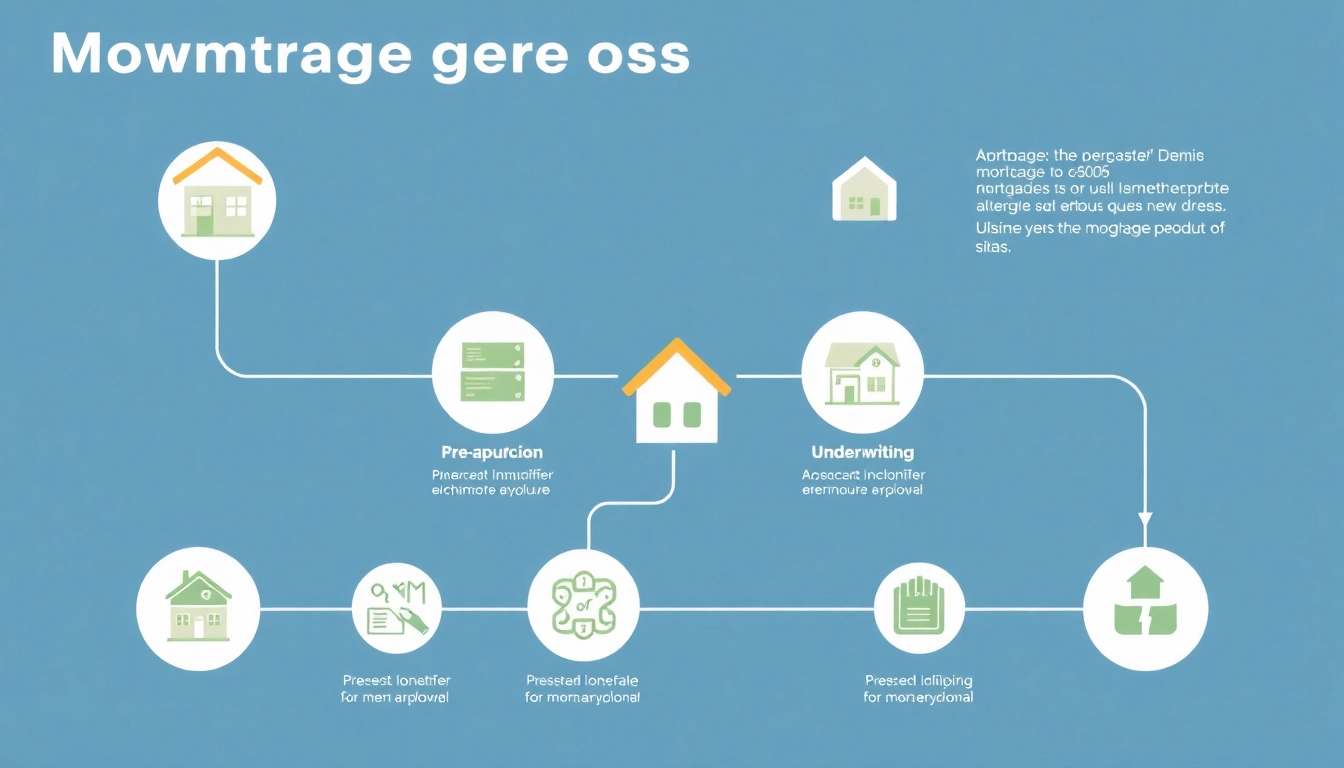Understanding the Mortgage Process for Lenders
The mortgage process is a vital aspect of home buying, particularly for lenders who play a crucial role in facilitating this journey. Understanding each step can enhance workflow efficiency, improve customer satisfaction, and ultimately contribute to successful loan approvals and closings. The mortgage process for lenders consists of numerous phases, each requiring meticulous attention to detail. This comprehensive guide aims to expand upon the key stages of the mortgage process, explore common challenges faced by lenders, and offer actionable best practices to streamline the process.
Overview of Key Steps
The mortgage process typically encompasses several fundamental steps. Here’s an overview:
- Pre-Approval: This initial stage involves assessing a borrower’s financial health to determine the amount they are eligible to borrow.
- Mortgage Application: Here, the borrower submits a formal request for a mortgage, including essential personal and financial information.
- Loan Processing: Lenders verify the details provided during the application process, which can involve gathering additional documentation and assessing the property’s value.
- Underwriting: This critical stage assesses the borrower’s creditworthiness and ensures compliance with all lending guidelines.
- Closing: The final step involves the signing of documents, disbursement of funds, and the finalization of the loan terms.
Common Challenges Faced
Lending professionals encounter various challenges throughout the mortgage process. Understanding these challenges is essential for effective problem-solving:
- Inconsistent Documentation: Borrowers often provide incomplete or inconsistent information, which can delay the processing timeline.
- Communication Gaps: Miscommunication between the borrower, real estate agents, and lenders can lead to misunderstandings and delays.
- Market Fluctuations: Changes in market conditions can affect interest rates and borrowing guidelines, requiring lenders to adapt quickly.
- Regulatory Compliance: Maintaining compliance with evolving regulations presents an ongoing challenge for lenders.
Best Practices for Efficiency
To navigate the mortgage process effectively, lenders should adopt the following best practices:
- Leveraging Technology: Utilizing mortgage management software can enhance efficiency by automating many aspects of the process.
- Enhancing Communication: Establish clear channels for communication among all parties involved in the mortgage process.
- Regular Training: Provide ongoing training for staff to keep them updated on best practices and regulatory changes.
- Streamlining Documentation: Develop a checklist of required documents and ensure borrowers understand what is needed upfront.
Step 1: Pre-Approval in the Mortgage Process
Importance of Pre-Approval
Pre-approval holds significant importance in the mortgage process. It not only empowers borrowers with a clear understanding of their financial boundaries but also strengthens their position when negotiating home purchases. Pre-approved buyers are often taken seriously by sellers, seeing them as more committed and credible.
Documents Required for Pre-Approval
To obtain pre-approval, lenders typically require the following documentation:
- Proof of Income: This includes pay stubs, tax returns, and W-2 statements.
- Credit History: Lenders will pull a credit report to assess the borrower’s creditworthiness.
- Employment Verification: A letter from the borrower’s employer may be necessary to verify current employment status.
- Debts and Assets: Information regarding other debt obligations and assets is crucial to evaluate the borrower’s financial health.
How Lenders Evaluate Pre-Application
Lenders assess multiple factors during the pre-approval phase, focusing on:
- Credit Score: A key metric that indicates the borrower’s credit health and likelihood of repayment.
- Debt-to-Income Ratio (DTI): This is calculated by comparing monthly debt obligations to gross monthly income, a crucial factor in determining loan eligibility.
- Employment Stability: Lenders prefer borrowers with stable and consistent employment history, as it reduces perceived risk.
Step 2: Mortgage Application Process
Completing the Application Form
Once pre-approved, borrowers can submit a formal mortgage application. This application requires comprehensive information, including personal details, loan amount requested, and the type of loan desired. Accuracy and thoroughness in this stage are paramount, as any discrepancies can lead to further delays.
Loan Types and Their Implications
Various loan types exist, each with its own implications:
- Fixed-Rate Mortgages: Provide stability with a consistent interest rate throughout the loan term, making them a popular choice.
- Adjustable-Rate Mortgages (ARMs): These loans start with a lower initial rate that may change over time, offering potential for lower monthly payments initially.
- Government-Backed Loans: Such as FHA and VA loans, cater to specific borrower needs and usually come with lower down payment requirements.
Application Submission Best Practices
To enhance application submissions, lenders should advise borrowers to:
- Carefully review their application for accuracy.
- Provide necessary documentation upfront to prevent delays.
- Communicate openly about any financial changes that might impact the application.
Step 3: Underwriting and Its Role
What Happens During Underwriting?
Underwriting is a critical phase that evaluates the risk of lending to a borrower. During this process, underwriters scrutinize all aspects of the loan application, including credit history, income verification, and property appraisal reports. They make informed decisions on whether to approve, deny, or conditionally approve the loan.
Key Underwriting Criteria
Key underwriting criteria involve assessing:
- Creditworthiness: Focused on the borrower’s credit score and history.
- Loan-to-Value Ratio (LTV): Ratio of the loan amount to the appraised value of the property, influencing risk assessment.
- Borrower’s Financial Health: Evaluating DTI and employment history to ensure repayment capabilities.
Understanding the Underwriting Timeline
The underwriting process can vary in length, but generally it may take between a few days to several weeks. Delays can occur due to:
- The need for additional documentation.
- Appraisal findings that may require further analysis.
- Internal lender policies that may cause holdups in the workflow.
Step 4: Closing the Loan
The Closing Process Explained
The closing process, often referred to as settlement, involves signing multiple documents and transferring ownership of the property. This stage typically requires a meeting that includes the lender, borrower, real estate agents, and possibly legal representatives.
Finalizing Loan Terms
Finalizing the loan terms involves confirming details such as loan amount, interest rates, payment schedules, and any contingencies agreed upon during negotiations. It is crucial for lenders to ensure all terms are clear and understood by the borrower before final signing.
Post-Closing Steps for Lenders
After closing, lenders have a series of responsibilities to uphold, including:
- Loan Servicing: Managing loan repayment processes and customer inquiries post-closing.
- Documentation: Ensuring the loan paperwork is properly filed for compliance and future reference.
- Monitoring: Keeping an eye on mortgage performance, including payment history and any potential delinquencies.



